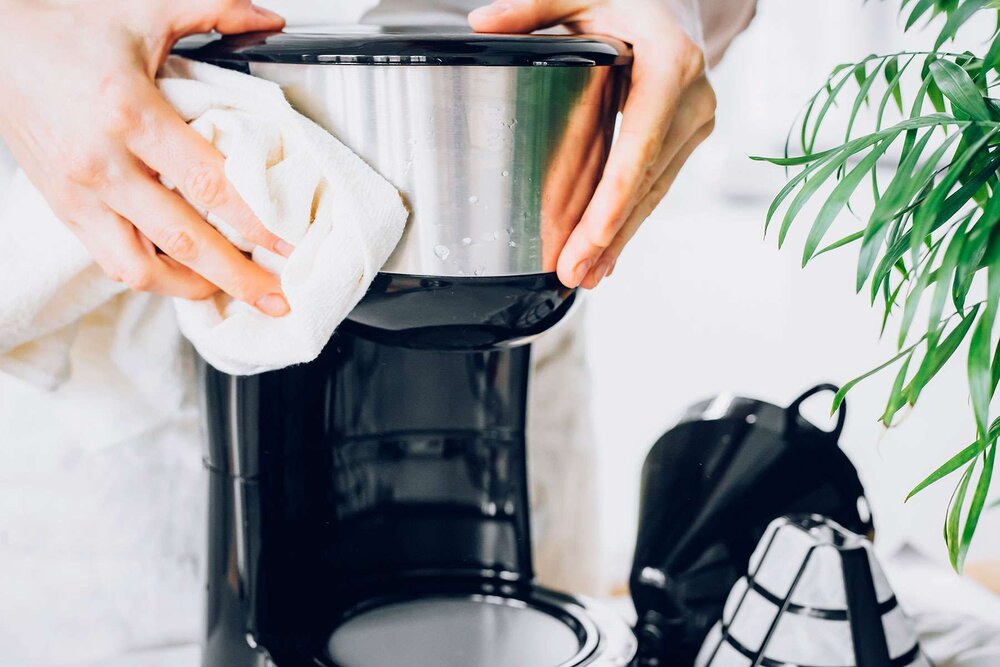
This Is the Easiest Way to Check if Your Coffee Maker Desperately Needs to Be Cleaned
Table of Contents
- Introduction
- Why Cleaning Your Coffee Maker is Important
- Signs Your Coffee Maker Needs Cleaning
- 1. Strange Tastes and Odors
- 2. Slower Brew Times
- 3. Excessive Steam
- 4. Visible Residue
- 5. Mold Growth
- How to Clean Your Coffee Maker
- Step 1: Gather Your Supplies
- Step 2: Clean Removable Parts
- Step 3: Descale the Coffee Maker
- Step 4: Wipe Down the Exterior
- Step 5: Clean the Carafe
- Step 6: Reassemble and Test
- Maintaining a Clean Coffee Maker
- Conclusion
This Is the Easiest Way to Check if Your Coffee Maker Desperately Needs to Be Cleaned
- Sophia Williams
- 24-07-2024
- 24-07-2024
- 1114 views
- Coffee Shop

Introduction
Coffee makers are an essential part of many people’s daily routines, providing that much-needed caffeine boost to start the day. However, like any appliance, coffee makers require regular maintenance to function properly and produce the best-tasting coffee. One of the most overlooked aspects of coffee maker care is cleaning. A dirty coffee maker can harbor bacteria, mold, and mineral buildup, all of which can affect the taste of your coffee and even your health. In this blog, we will explore the easiest ways to check if your coffee maker desperately needs to be cleaned, along with tips on how to keep it in top condition.
Why Cleaning Your Coffee Maker is Important
Before we dive into the signs that your coffee maker needs cleaning, it’s important to understand why regular cleaning is crucial. Here are a few key reasons:
- Improved Taste: Old coffee oils and mineral deposits can build up in your coffee maker, leading to a bitter or off-tasting brew. Cleaning removes these residues, ensuring your coffee tastes fresh and delicious.
- Health Benefits: Coffee makers can become breeding grounds for bacteria, mold, and yeast if not cleaned regularly. These microorganisms can pose health risks, especially if you have a compromised immune system.
- Extended Lifespan: Regular cleaning helps prevent mineral buildup that can clog your coffee maker’s internal components. This can extend the lifespan of your machine and keep it running smoothly.
- Efficient Performance: A clean coffee maker operates more efficiently, brewing your coffee faster and at the correct temperature.
Signs Your Coffee Maker Needs Cleaning
So, how do you know if your coffee maker desperately needs to be cleaned? Here are some telltale signs to look out for:
1. Strange Tastes and Odors
If your coffee starts to taste bitter, metallic, or just off, it could be a sign that your coffee maker is overdue for a cleaning. Similarly, any unusual odors emanating from the machine, even when it’s not in use, indicate that it’s time for a deep clean.
2. Slower Brew Times
Mineral deposits from hard water can accumulate in your coffee maker’s internal components, slowing down the brewing process. If you notice that your coffee maker is taking longer than usual to brew a pot of coffee, it’s likely due for a descaling.
3. Excessive Steam
Excessive steam or sputtering during the brewing process can be a sign of mineral buildup in the heating elements or water lines. This buildup can cause blockages, leading to inefficient operation and potential damage to your coffee maker.
4. Visible Residue
Check the water reservoir, carafe, and any removable parts for visible coffee stains, mineral deposits, or mold. If you see any residue, it’s a clear indication that your coffee maker needs a thorough cleaning.
5. Mold Growth
Mold can grow in the warm, damp environment of a coffee maker, especially in areas that are not easily visible, such as the water reservoir or internal tubing. If you notice mold or mildew, it’s essential to clean your coffee maker immediately to prevent health risks.
How to Clean Your Coffee Maker
Now that you know the signs that your coffee maker needs cleaning, let’s look at how to clean it properly. Here are some simple steps to follow:
Step 1: Gather Your Supplies
To clean your coffee maker, you will need the following supplies:
- White vinegar or a commercial descaling solution
- Fresh water
- Dish soap
- A soft cloth or sponge
- A small brush (like a toothbrush)
Step 2: Clean Removable Parts
Start by unplugging your coffee maker and removing any detachable parts, such as the carafe, filter basket, and water reservoir. Wash these parts with warm, soapy water, and use a small brush to scrub away any stubborn stains or residue. Rinse thoroughly and let them air dry.
Step 3: Descale the Coffee Maker
Descaling helps remove mineral deposits that can build up inside your coffee maker. Fill the water reservoir with a mixture of equal parts white vinegar and water. If you’re using a commercial descaling solution, follow the instructions on the packaging.
Turn on the coffee maker and run a brewing cycle without a coffee filter. Once the cycle is complete, discard the vinegar solution and run two or three more cycles with fresh water to rinse out any remaining vinegar.
Step 4: Wipe Down the Exterior
While the descaling solution is working its magic, take the opportunity to wipe down the exterior of your coffee maker with a damp cloth. Pay special attention to any areas with visible stains or residue.
Step 5: Clean the Carafe
If your carafe has stubborn coffee stains, fill it with a mixture of warm water and a few drops of dish soap. Let it soak for a few minutes, then scrub with a soft cloth or sponge. For tougher stains, you can use a mixture of baking soda and water to form a paste and scrub gently.
Step 6: Reassemble and Test
Once all the parts are clean and dry, reassemble your coffee maker and run a test brew with just water to ensure everything is working properly. Your coffee maker should now be clean, fresh, and ready to brew delicious coffee.
Maintaining a Clean Coffee Maker
Regular maintenance is key to keeping your coffee maker in top condition. Here are some tips to help you maintain a clean coffee maker:
- Clean Removable Parts Daily: Rinse the carafe, filter basket, and any other removable parts after each use to prevent coffee residue and oil buildup.
- Descale Monthly: Depending on how often you use your coffee maker and the hardness of your water, descale your machine once a month to remove mineral deposits.
- Use Filtered Water: Using filtered water can help reduce mineral buildup and improve the taste of your coffee.
- Keep the Water Reservoir Dry: After each use, empty and dry the water reservoir to prevent mold and bacteria growth.
- Store Properly: If you don’t use your coffee maker daily, store it in a dry, cool place to prevent dust and moisture buildup.
Conclusion
A clean coffee maker is essential for brewing delicious, fresh-tasting coffee and ensuring the longevity and efficiency of your machine. By paying attention to the signs that your coffee maker needs cleaning and following the simple steps outlined above, you can keep your coffee maker in excellent condition. Remember, regular maintenance is key to enjoying the best possible coffee experience every day.






















